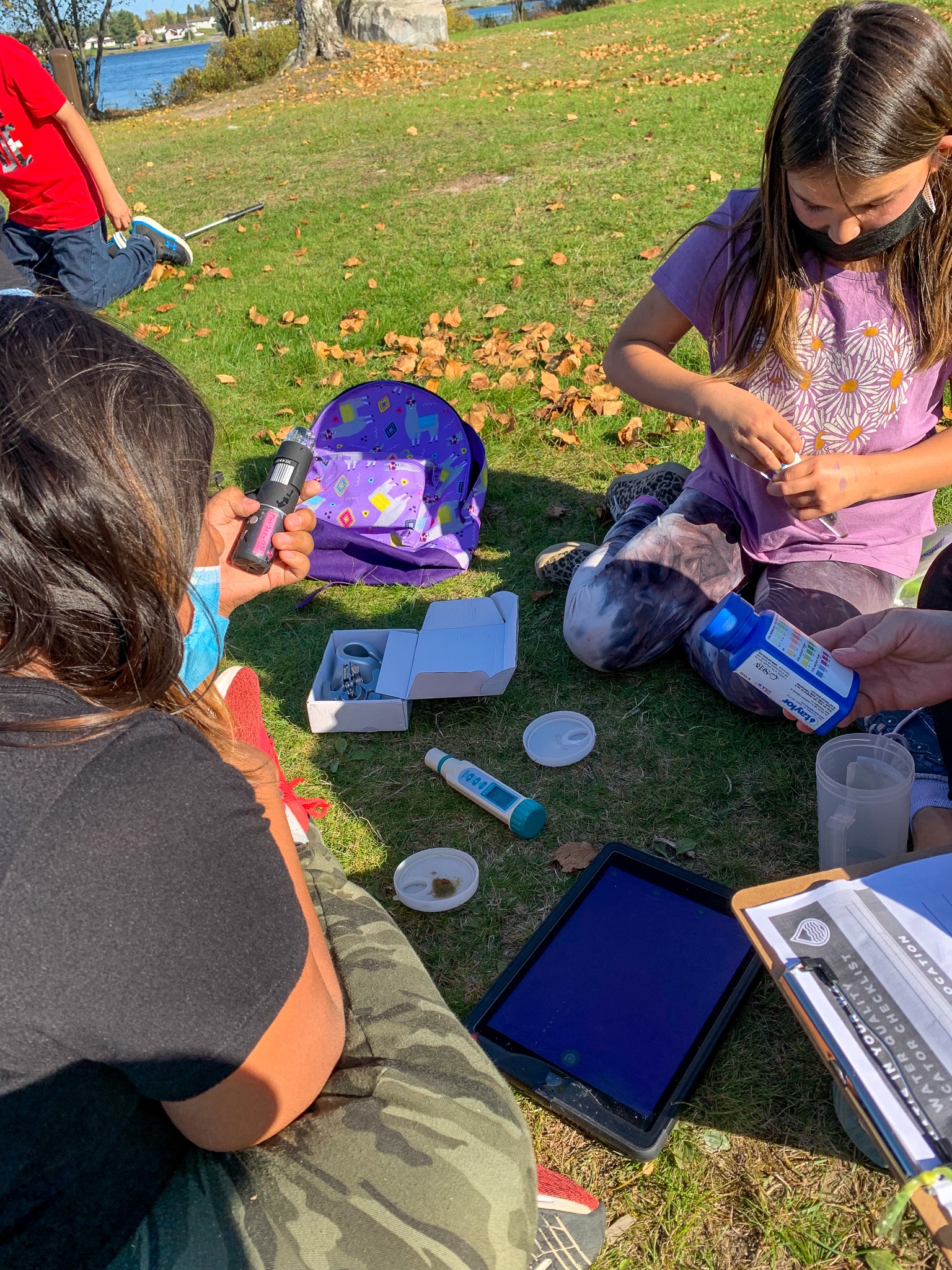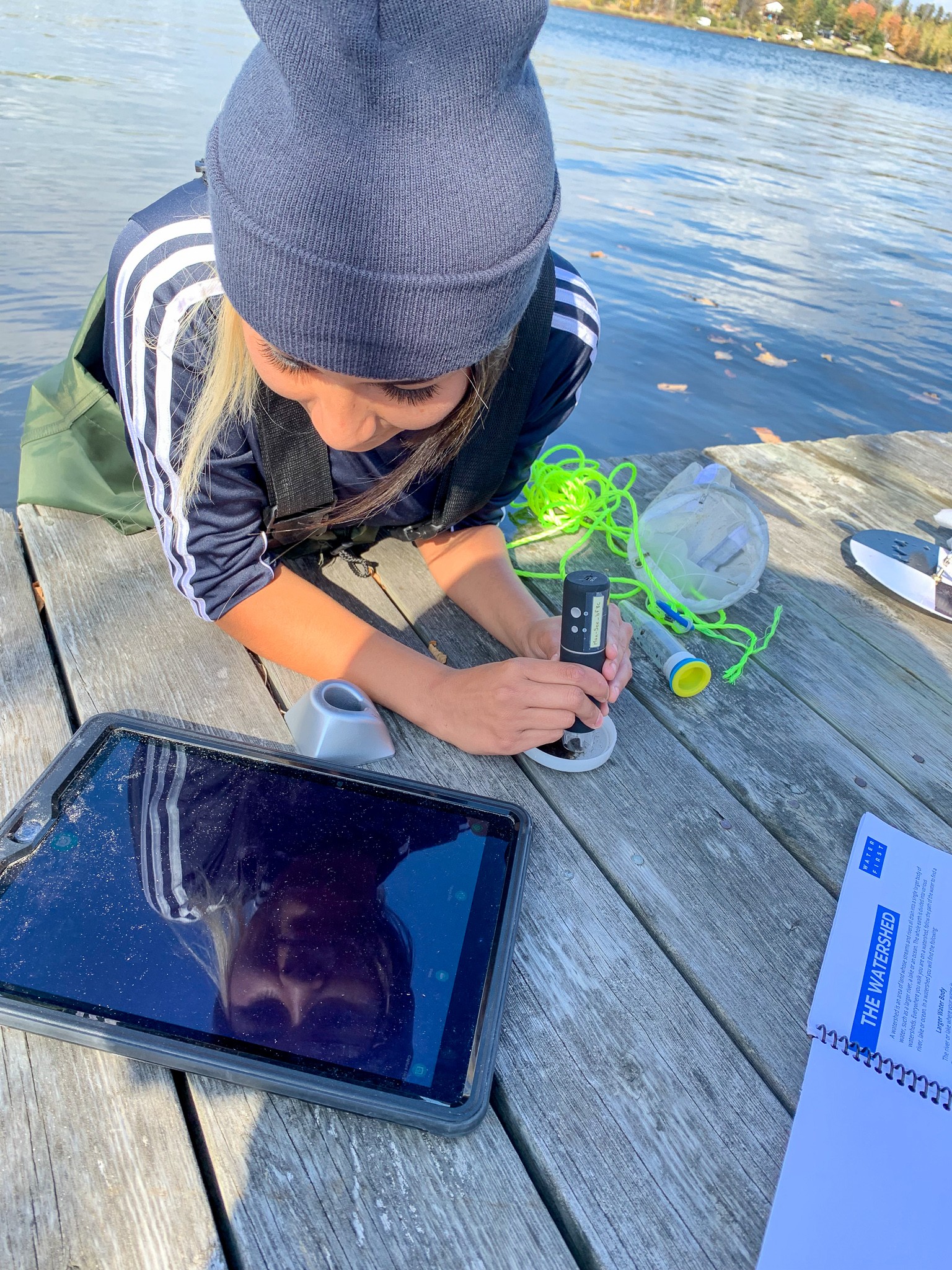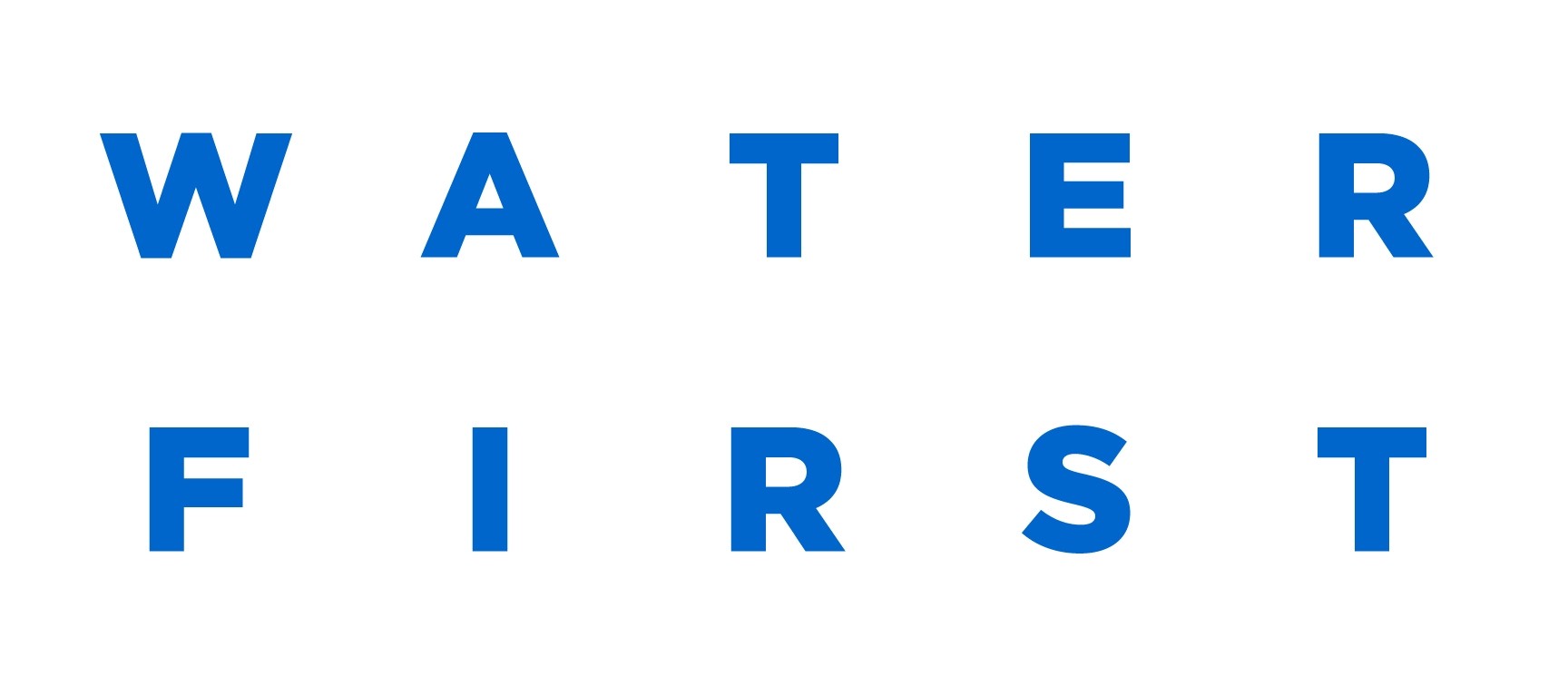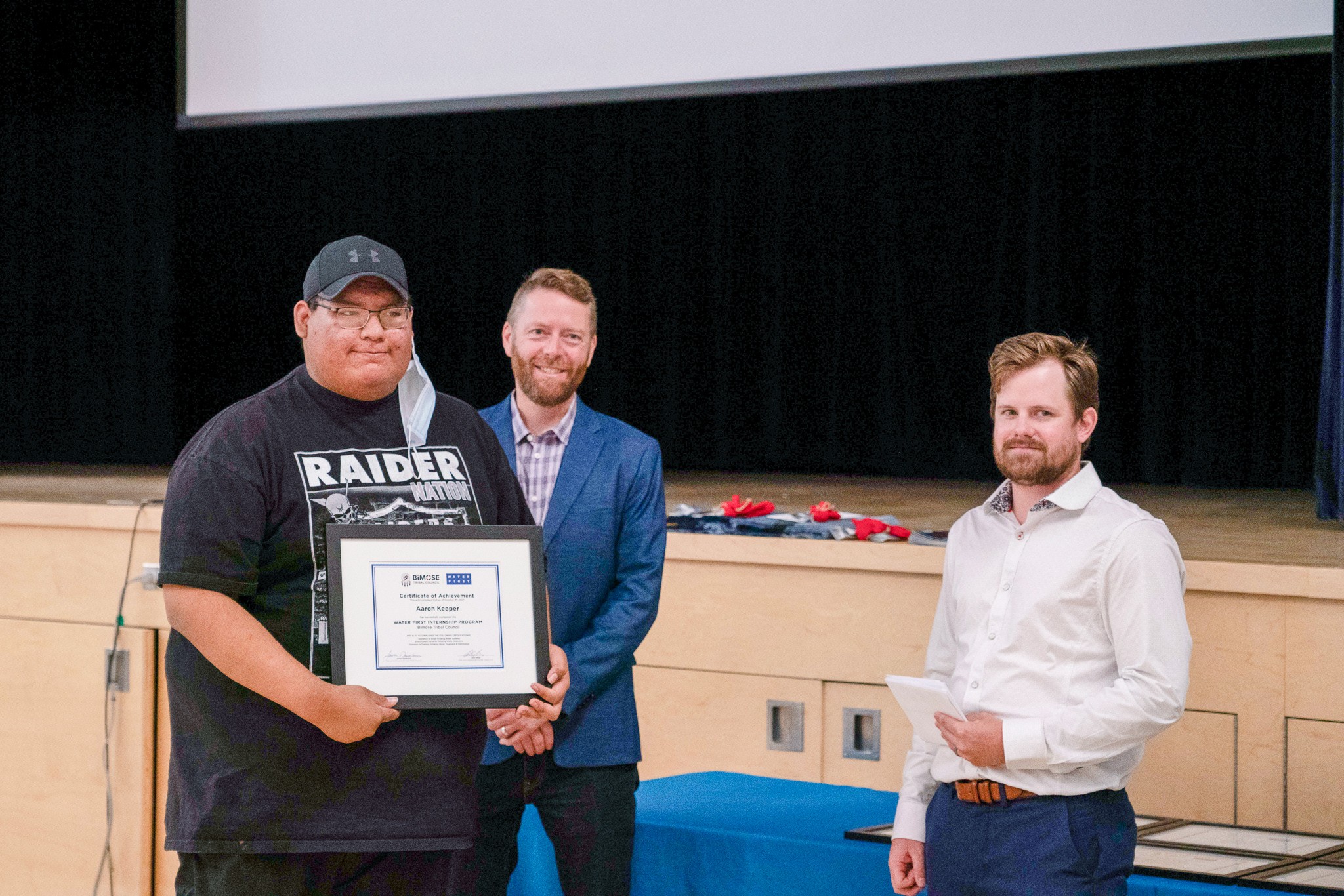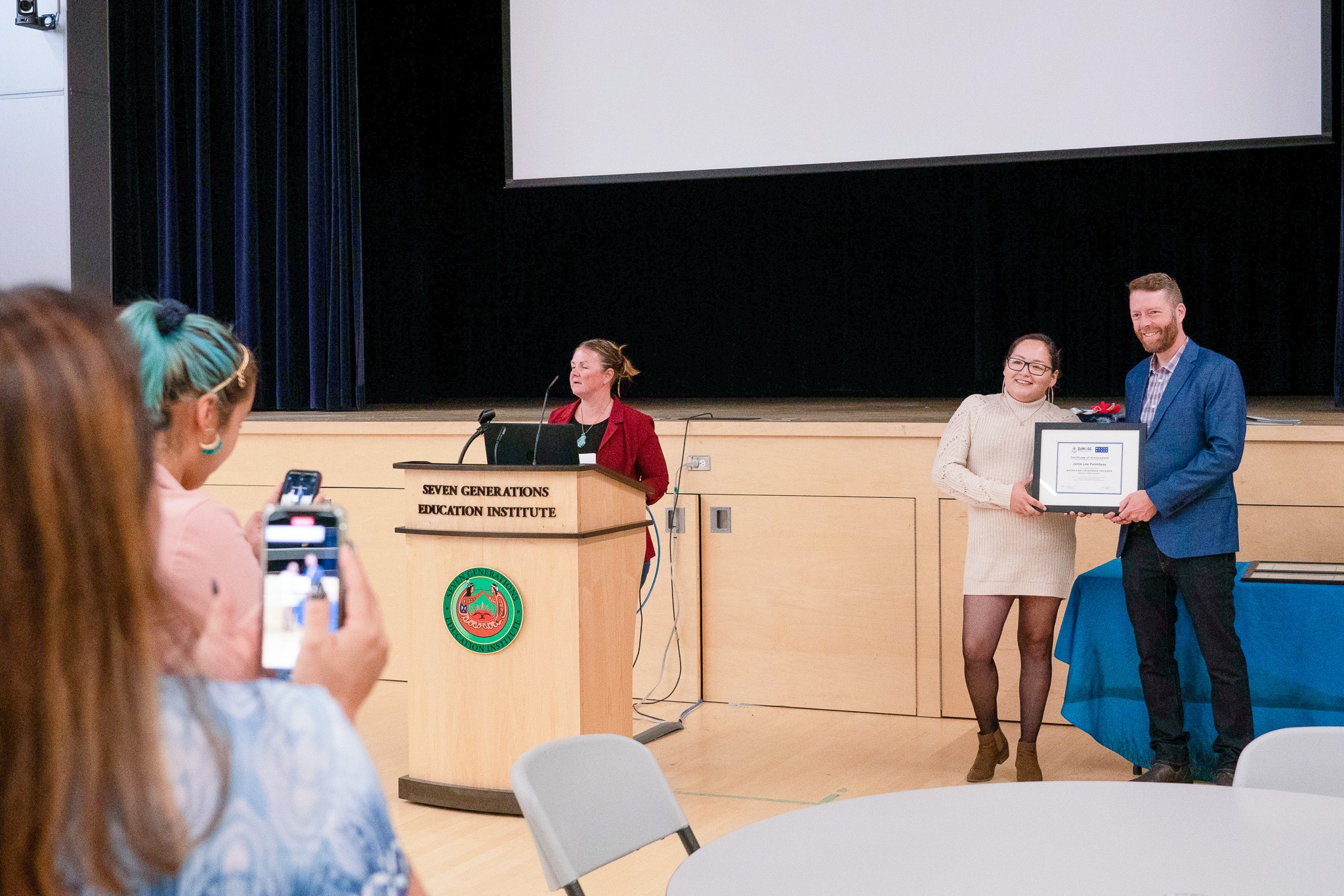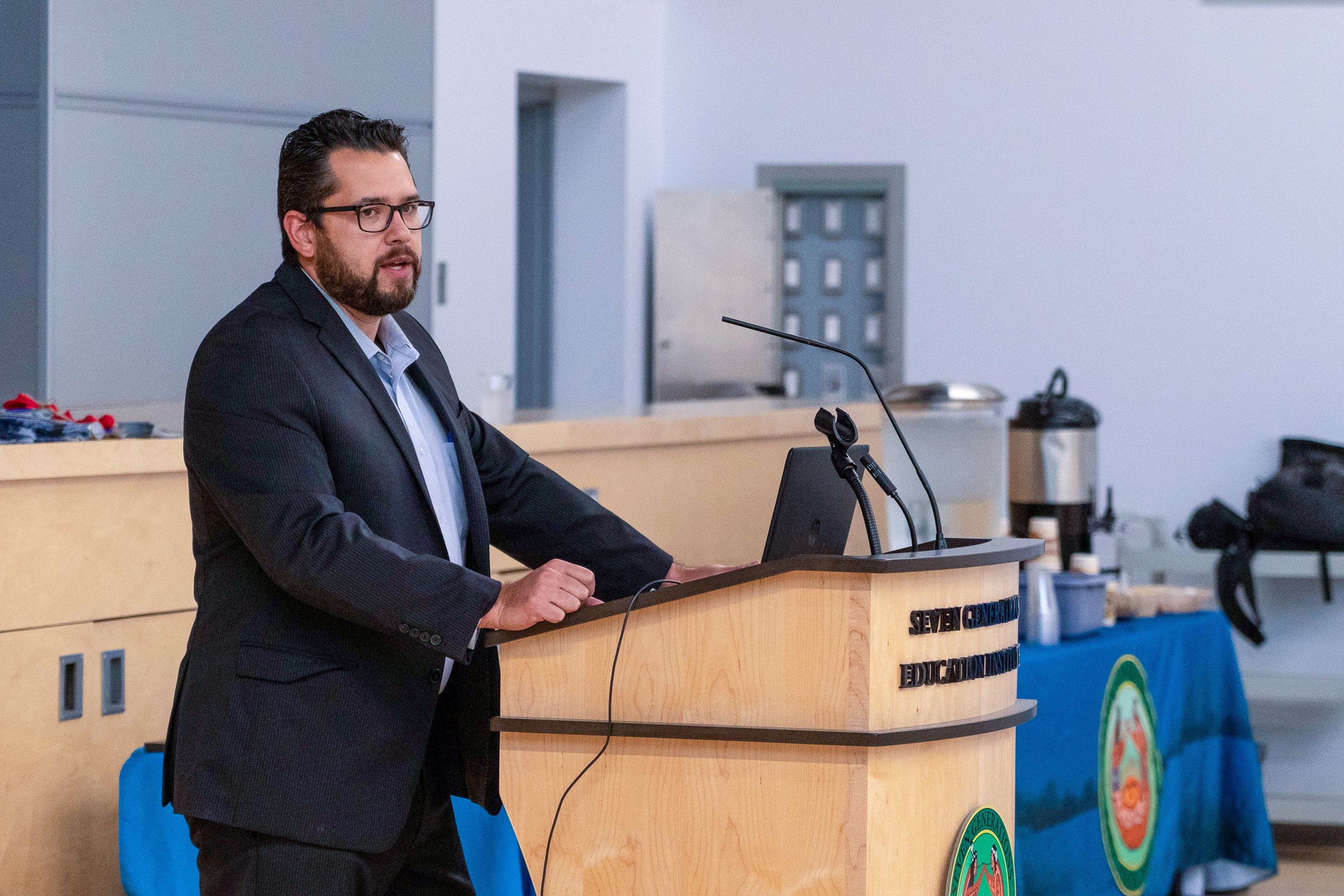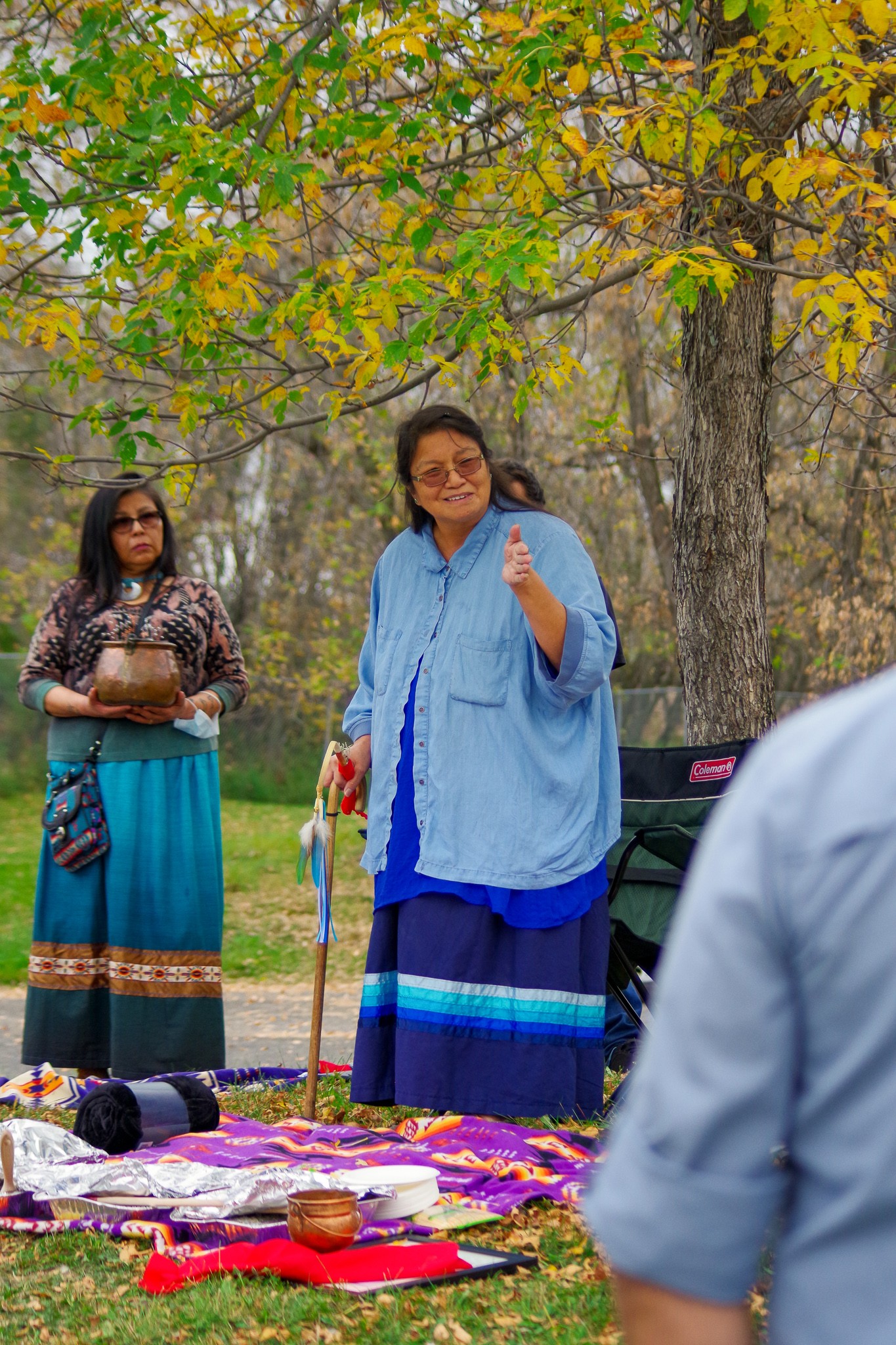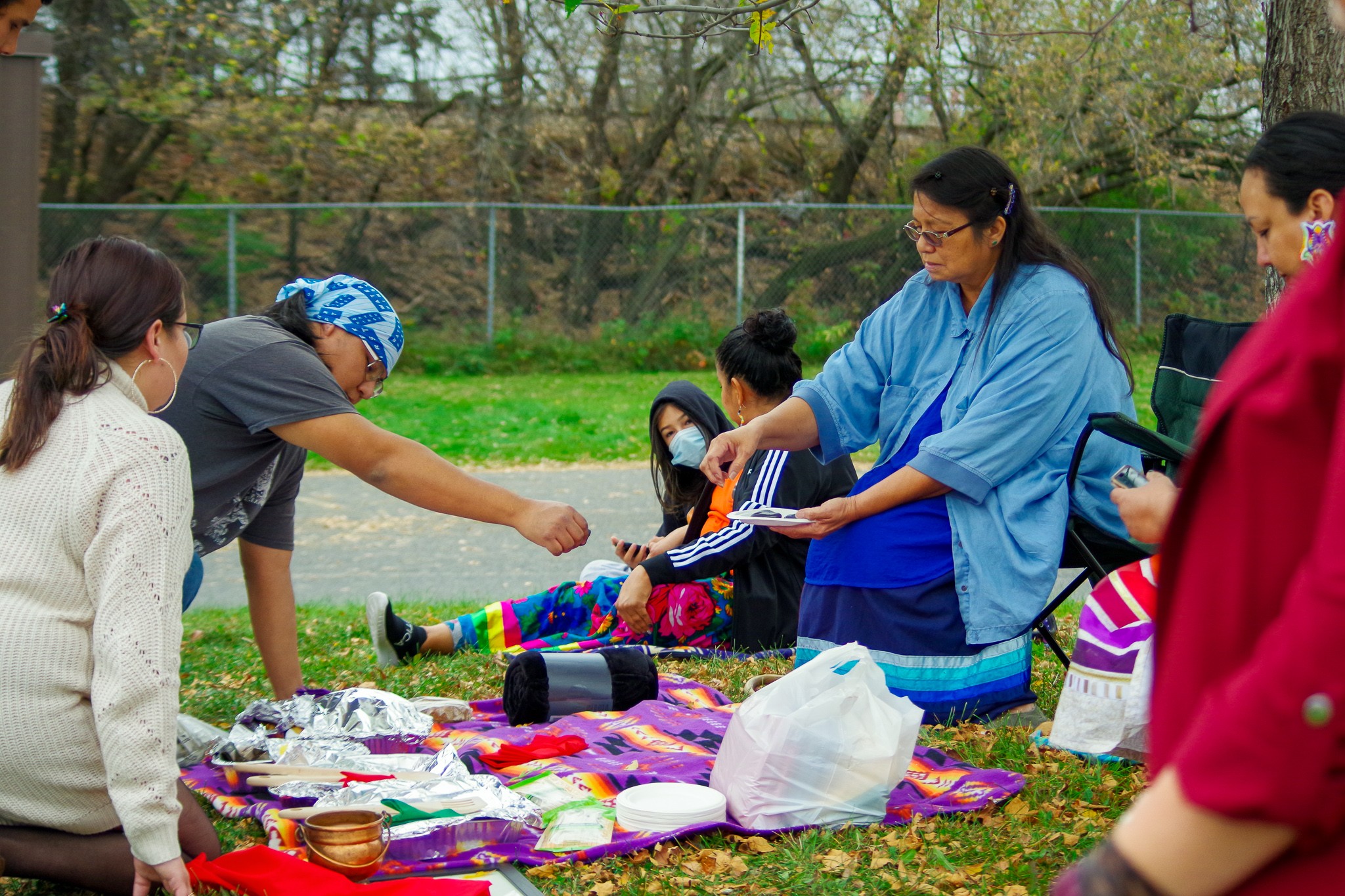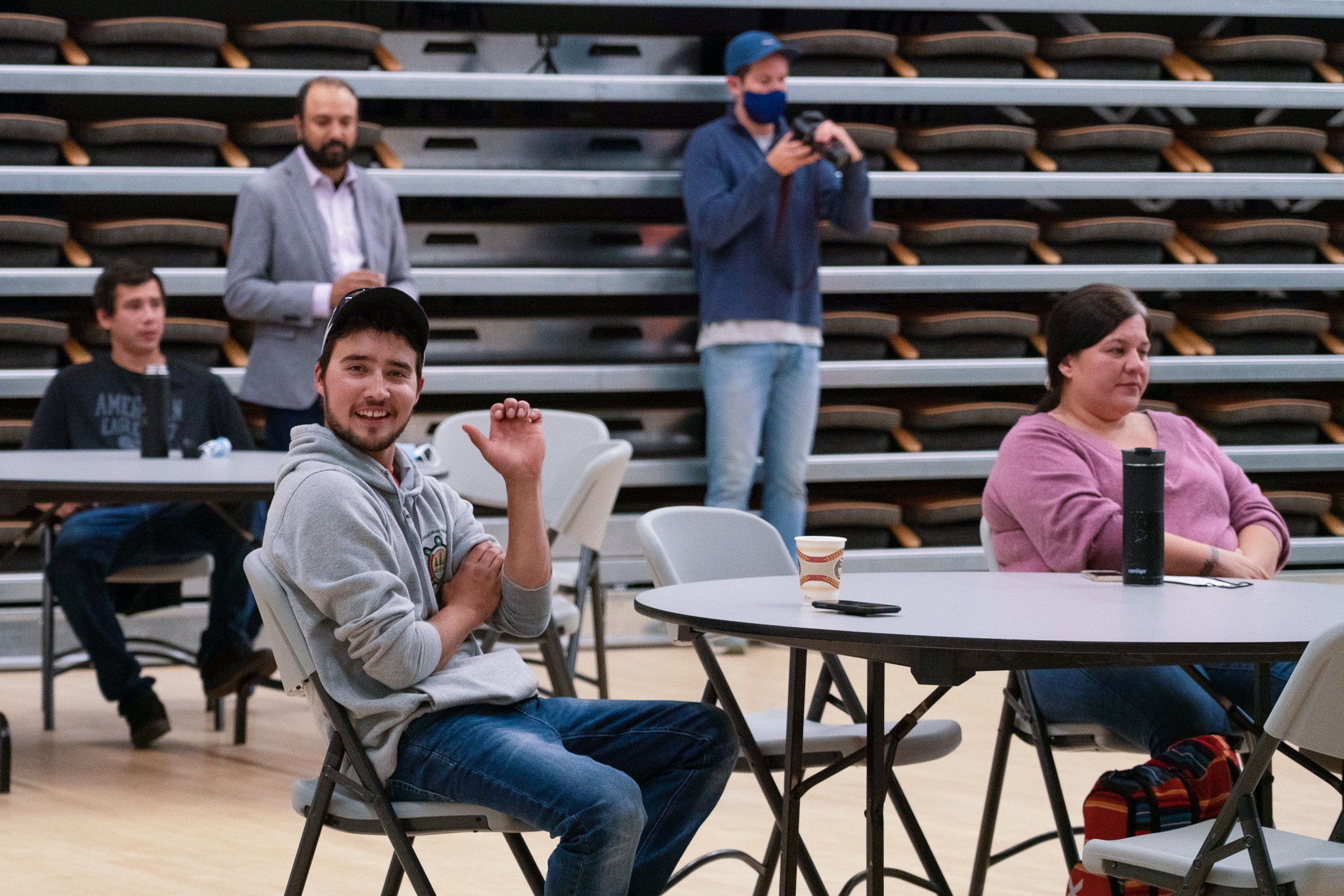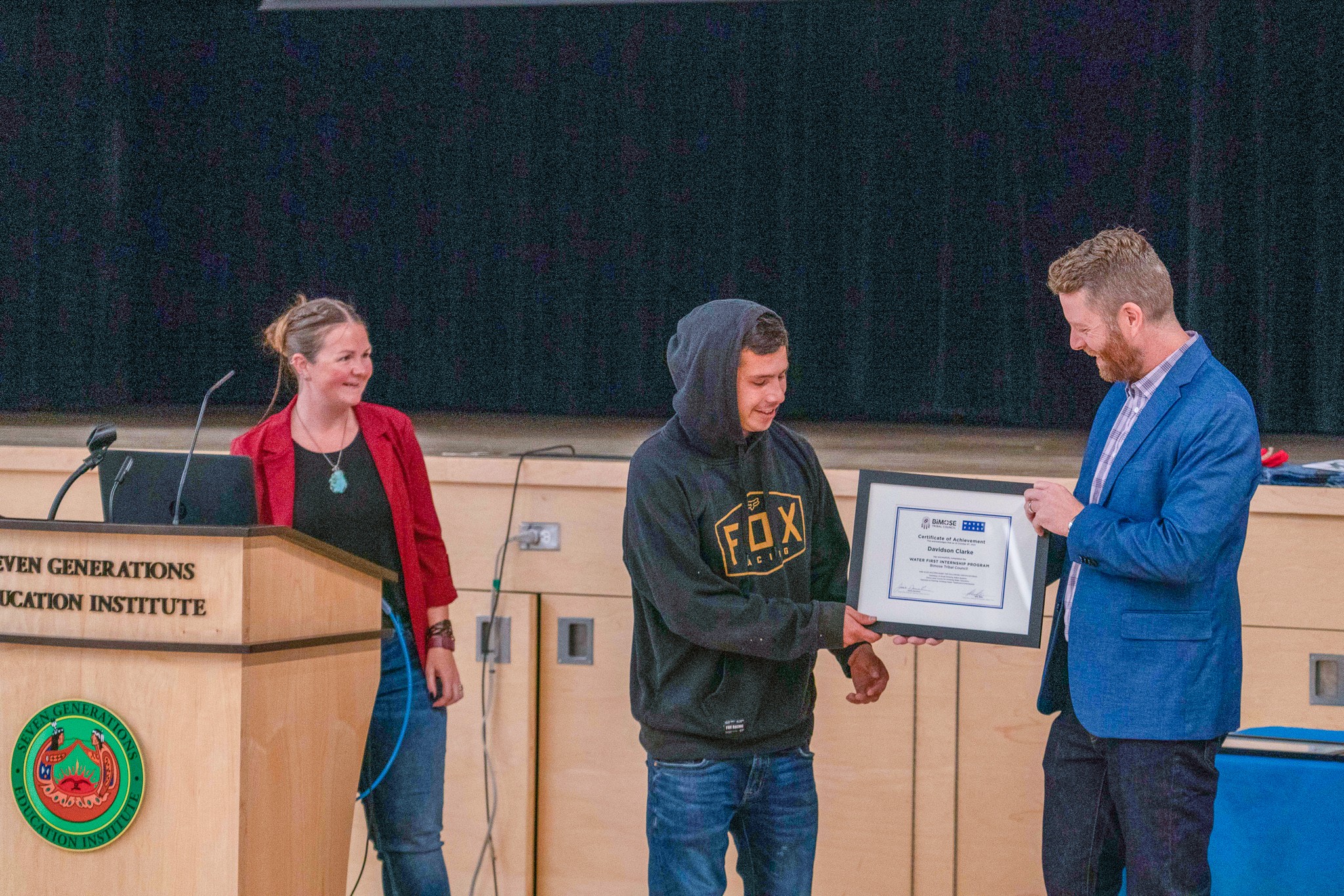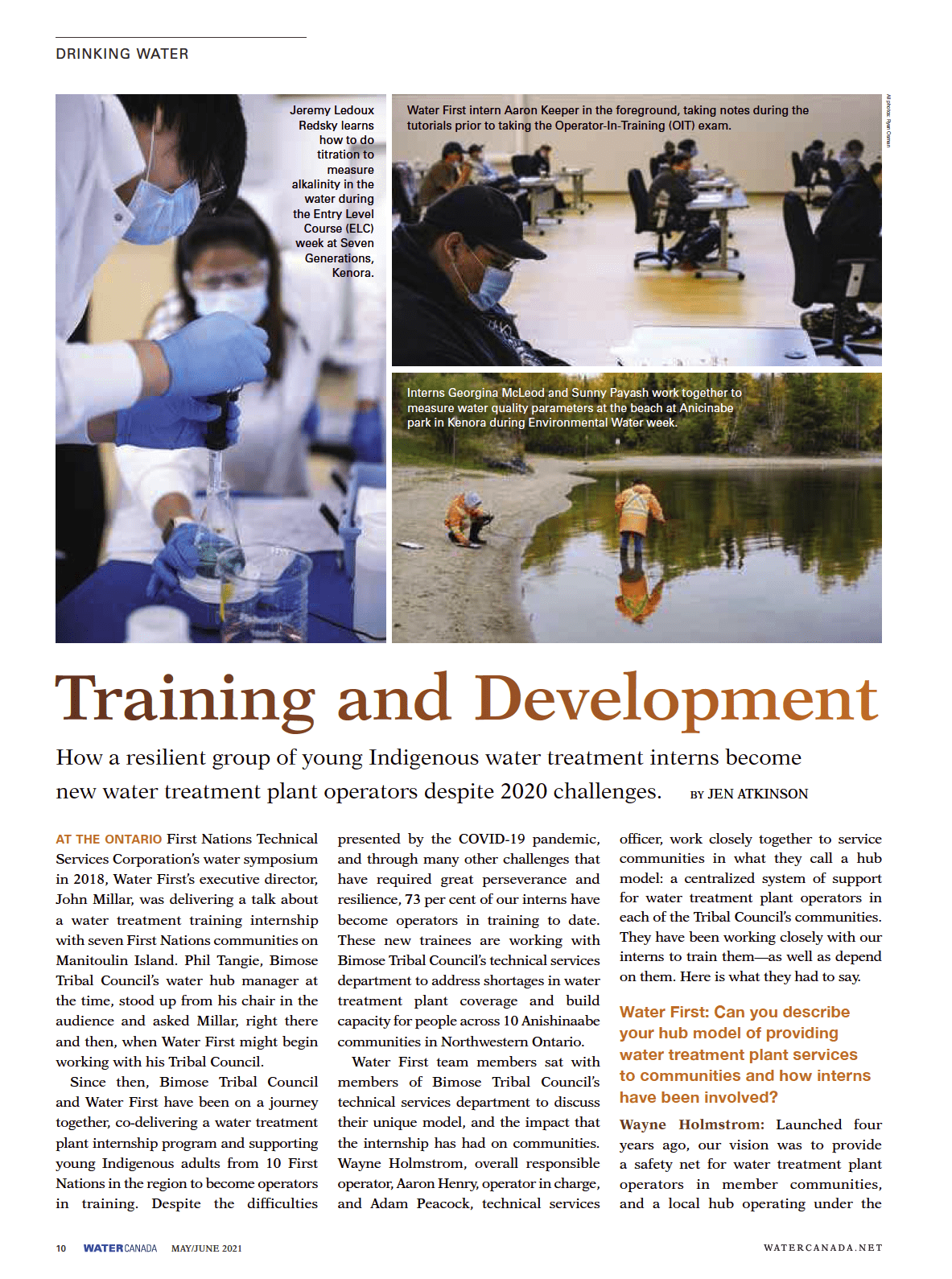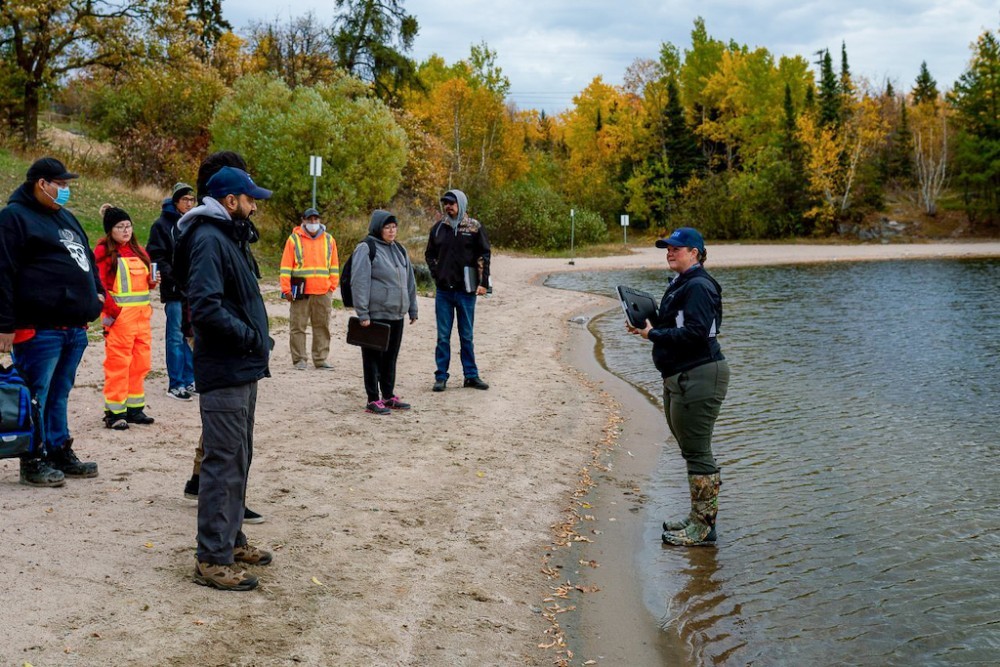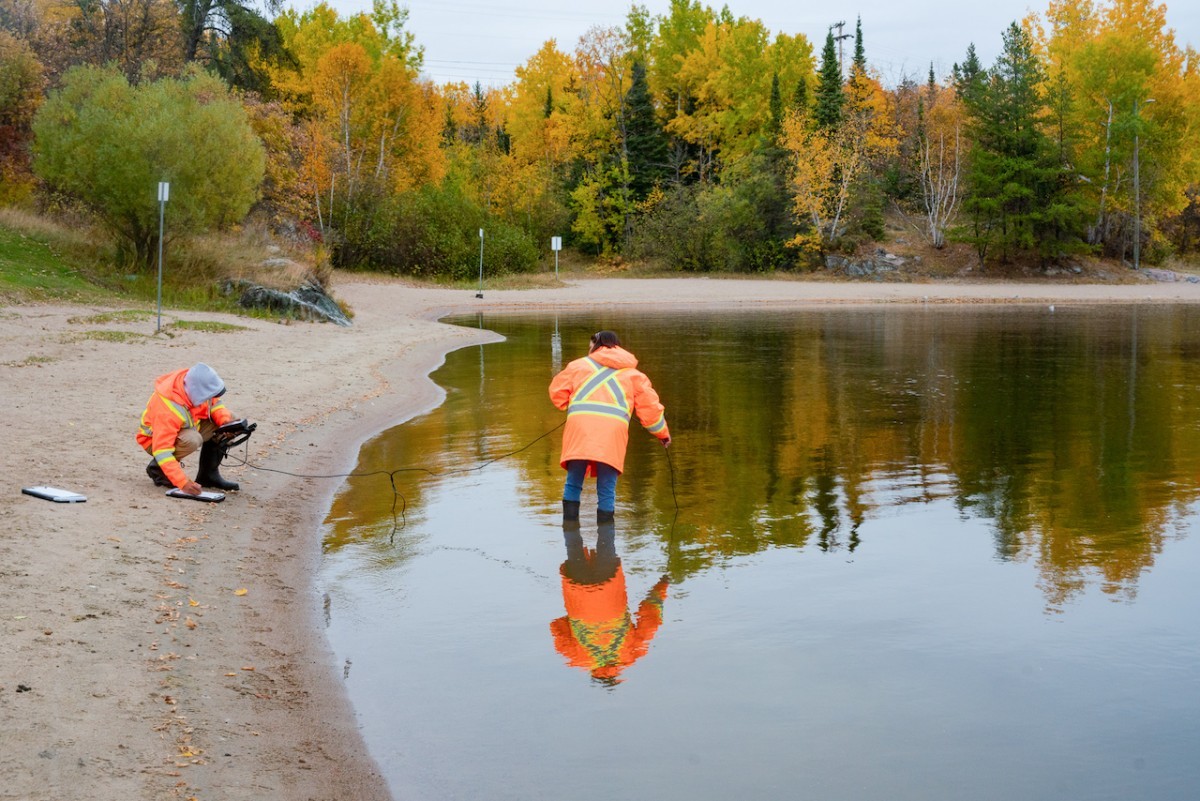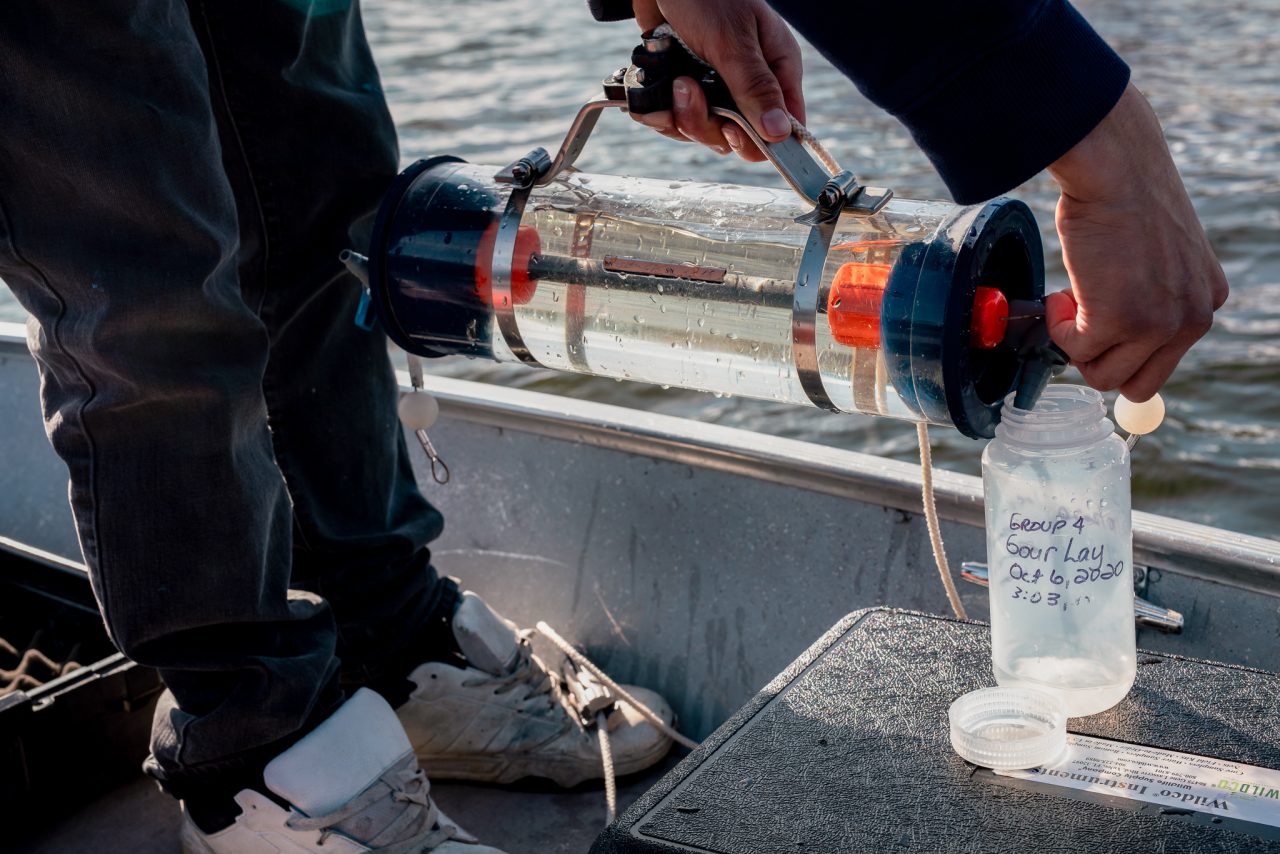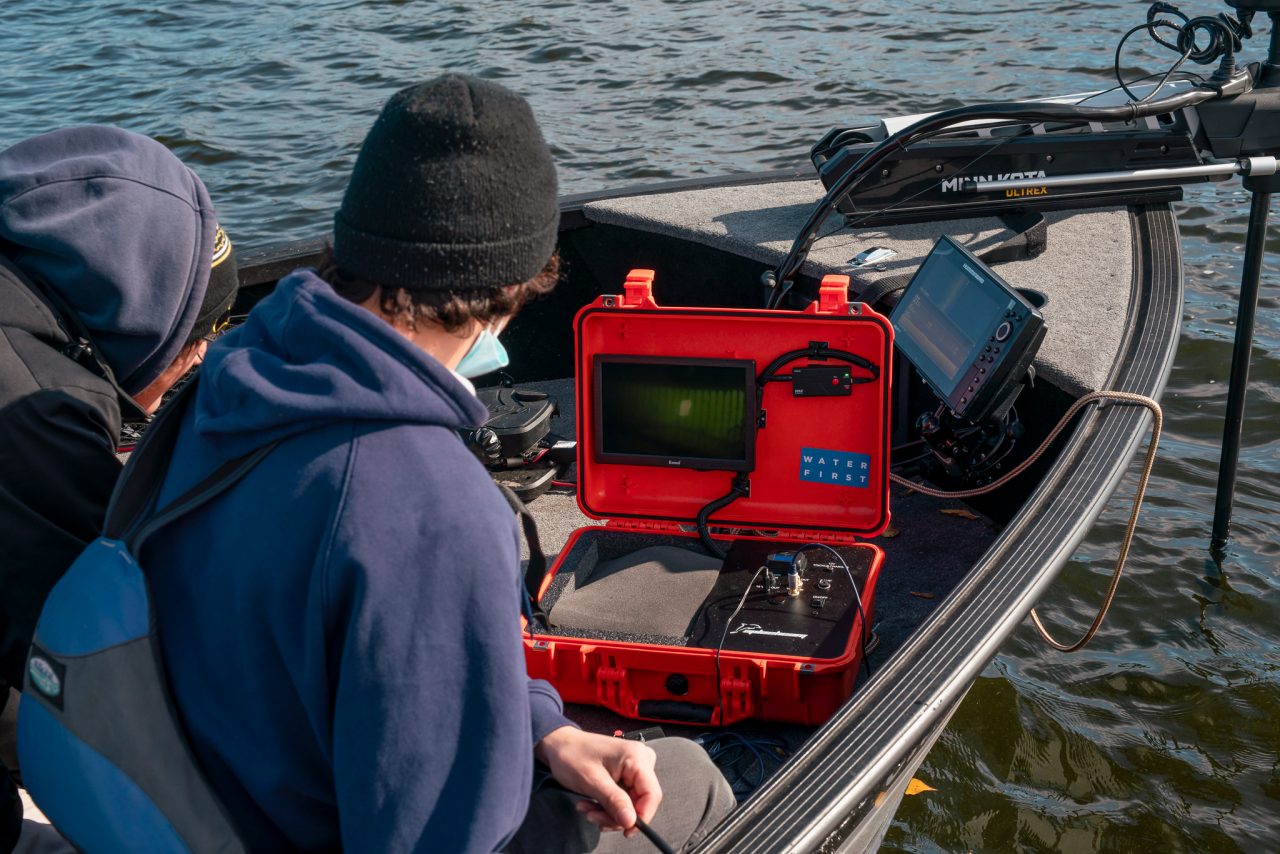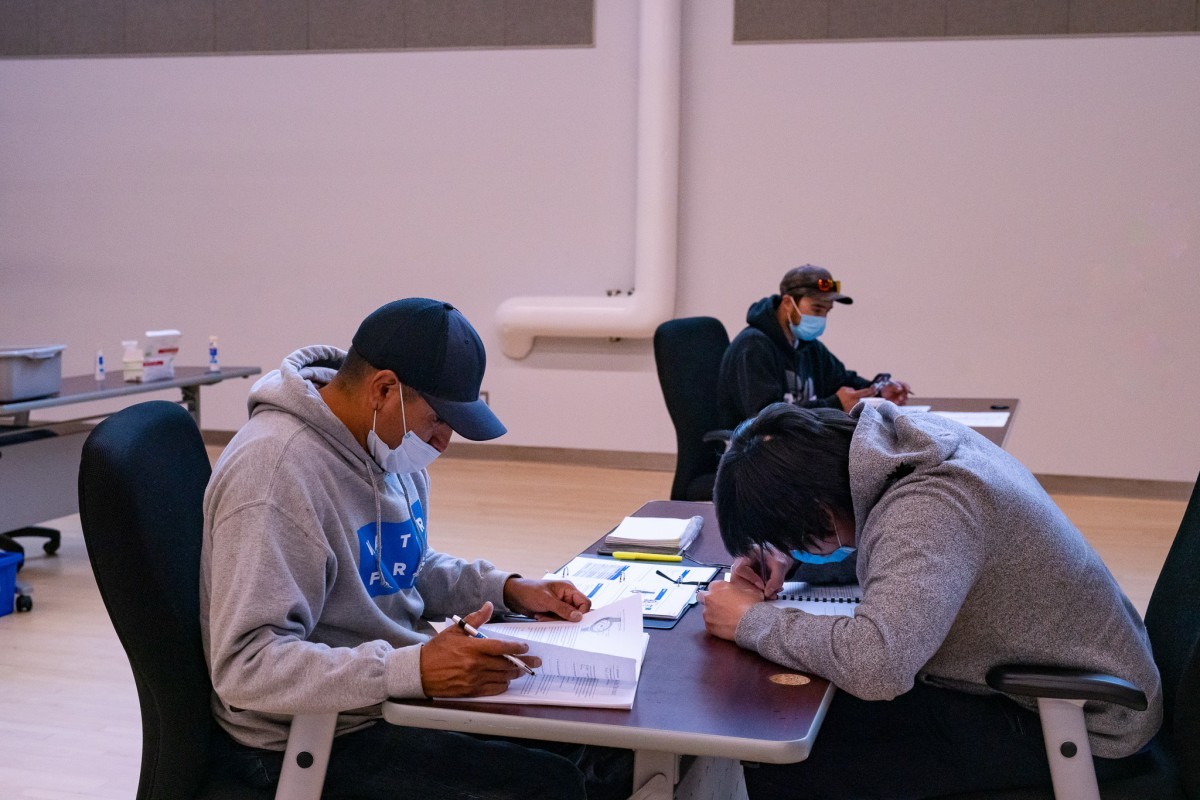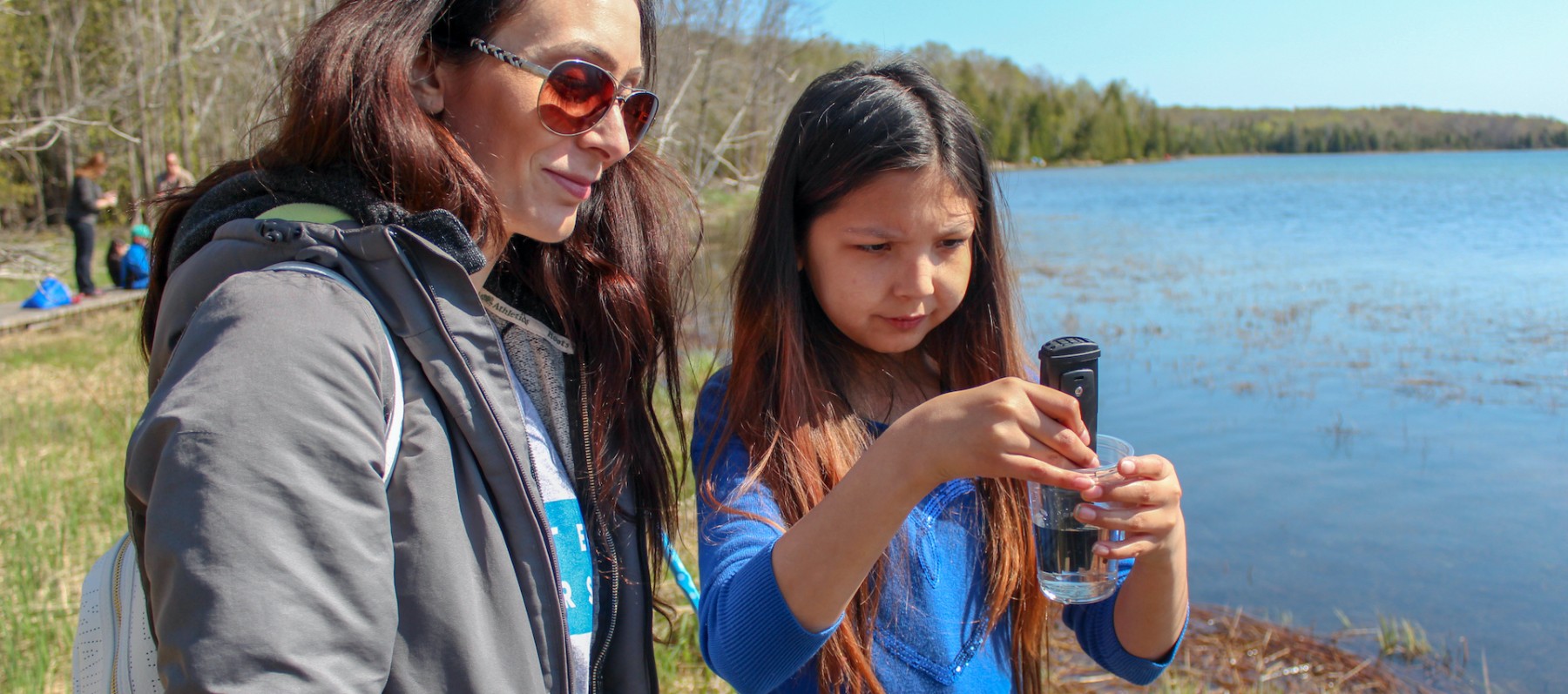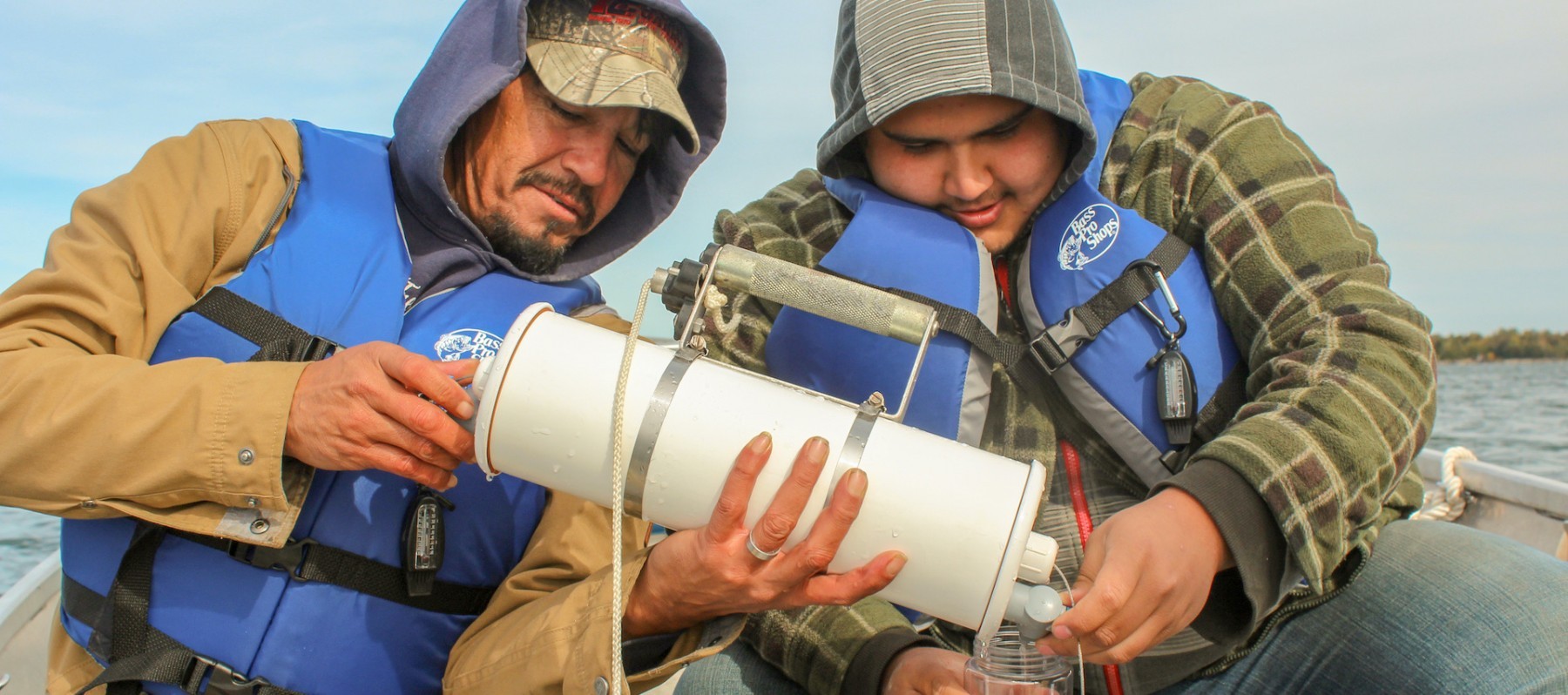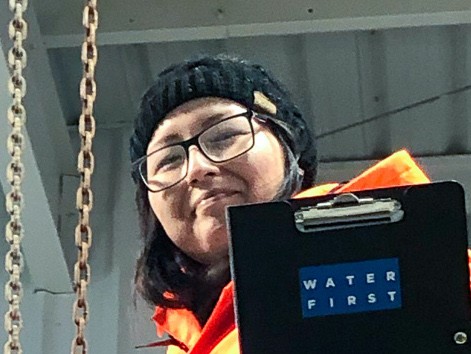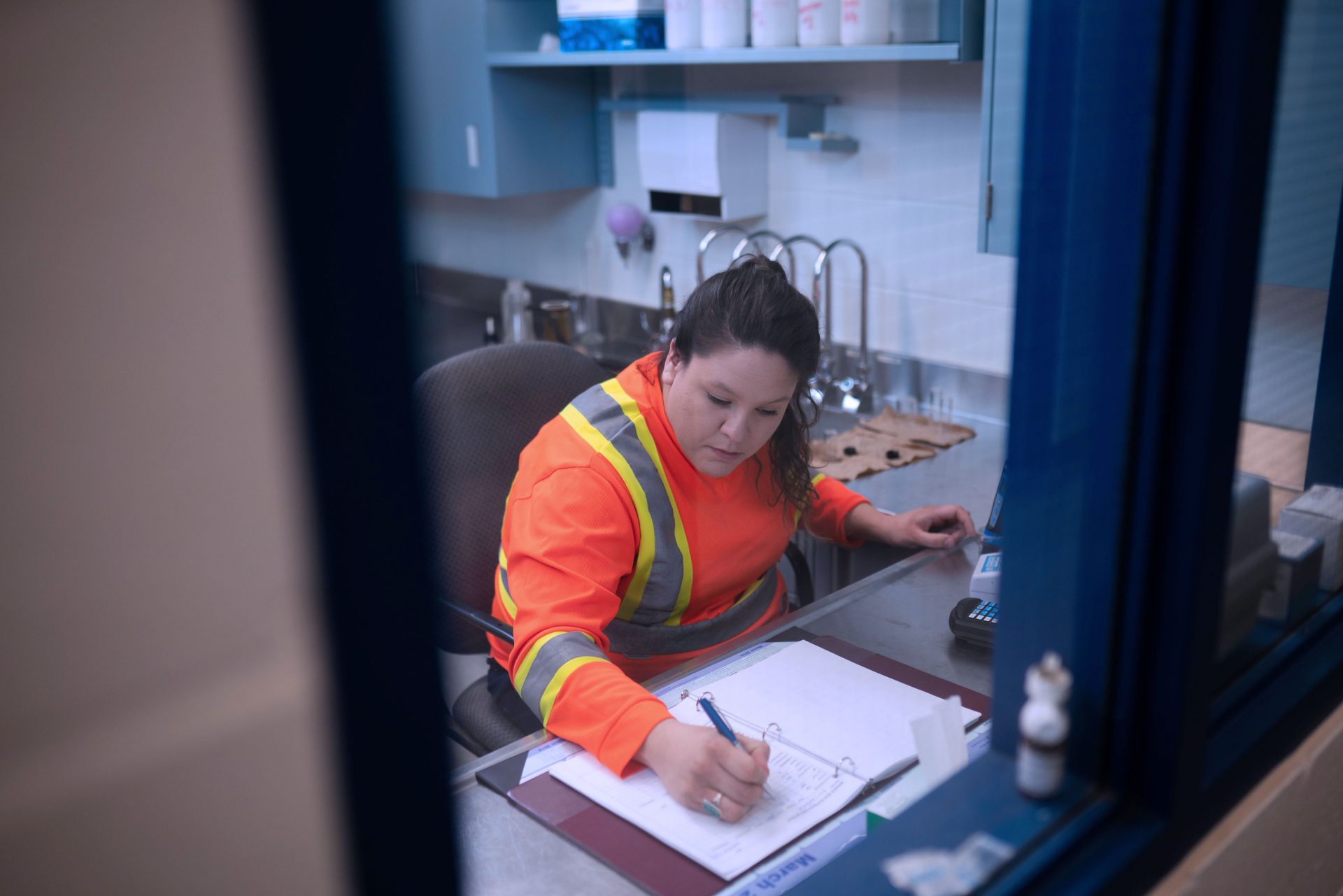Delivering Upstream: A Sibling of the Internship
The Indigenous Schools Water Program (ISWP) delivers workshops and hands-on STEM experiences for school-aged youth to learn about their local watersheds and the factors that contribute to a healthy ecosystem. We have the honour of conducting these workshops in all of the communities involved in the Drinking Water Internship. We wanted to share with you how excited and engaged the students are when they are out on the land, using scientific tools and instruments and working together to translate numbers and data into discoveries about their own communities.
During 2018, ISWP visited every school on Manitoulin Island in connection to the Mnidoo Mnising Tribal Council Partnership. Currently, we have that opportunity in connection with the Internship Program with the Bimose Tribal Council Partnership. Our first workshop series coincided with the Internship graduation ceremony in the first week of October. We wanted to be there sooner, but COVID restrictions delayed us. Let me tell you, to be there in person was well worth the wait!
We were invited to Gaagagekiizik School (or Kiizhik for short) in Kenora to deliver workshops at the school in person. They suggested that all programming be delivered outside. This was an exciting challenge for us, because we have many workshops that we had only delivered indoors for convenience. Since Kenora is further North than our office, we packed our toques in anticipation of being outside all day in colder weather. To our delight, the toques were not needed as we faced 20°C, or warmer, every day, making our time outside even more memorable.

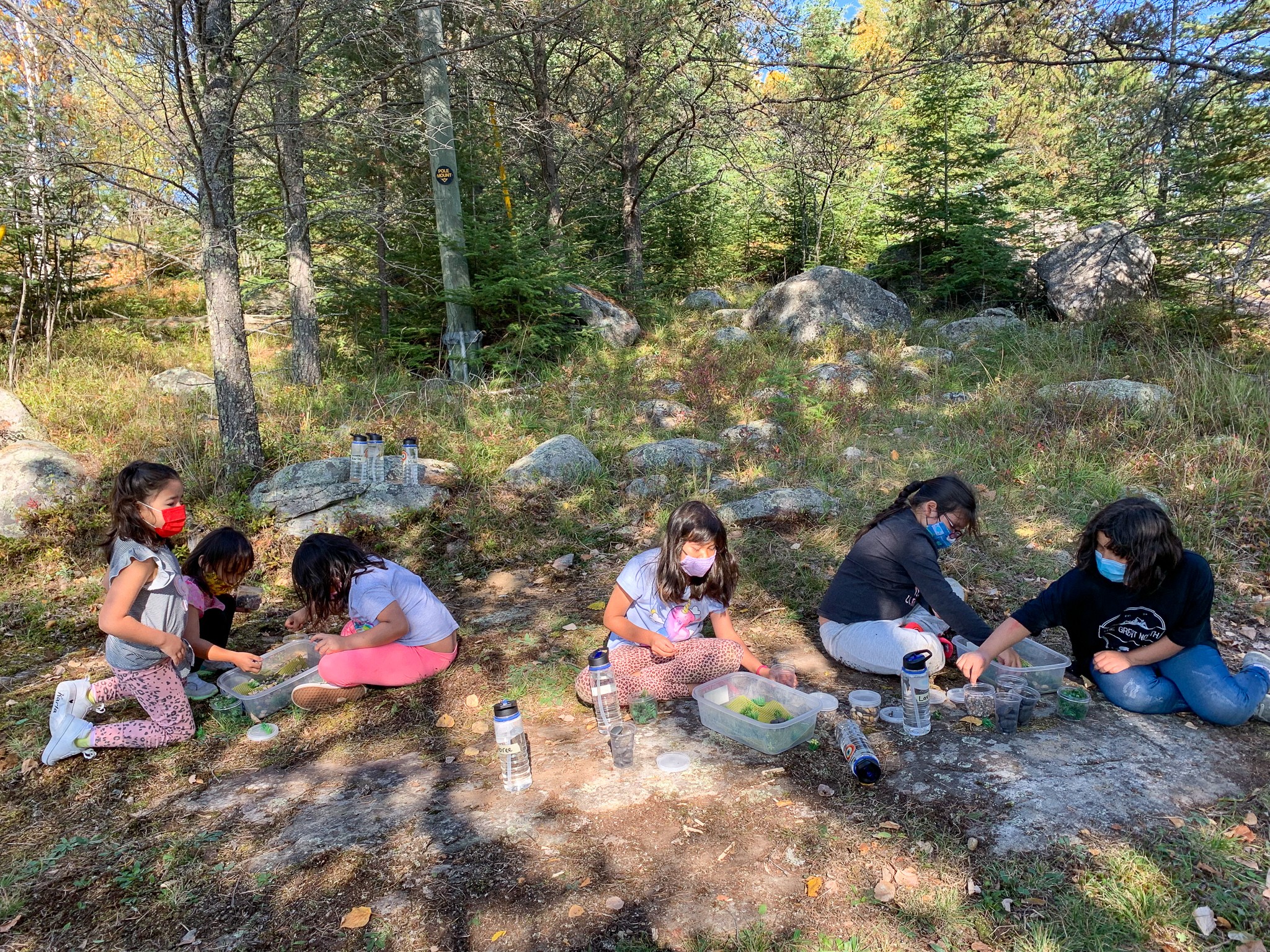
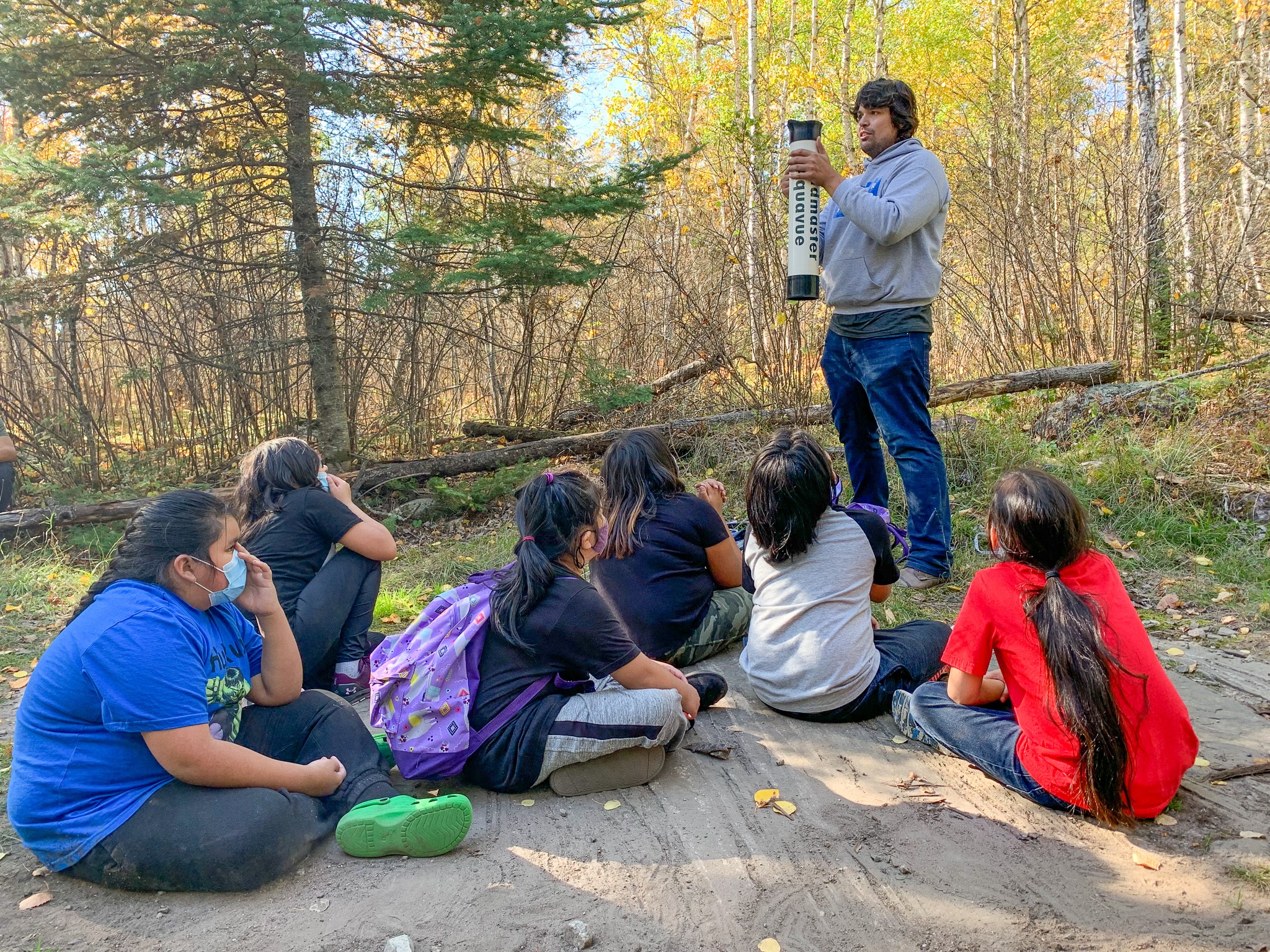
Our outdoor classroom locations were straight from The Group of Seven paintings. If you’re not familiar with the Group of Seven, picture stunning landscapes surrounded by raw rock faces and windswept trees. It was a breath of fresh air for the students and for us as we learned about the watershed while sitting in the watershed itself.
We were blessed with a local water body called Rabbit Lake that was close enough to the school that we could walk. The gym teacher told us he takes students there often, so we took guidance from him. We set a timer to challenge each class to make it to the lake within 10 minutes, and all students were on board with this mission. All four classes we took to the water made it in record time.
Imagine taking a group of 15-20 students to walk through the woods to the lake to learn about water and land. Getting out on the land with the students is one of the highlights of the program. The walk helped us all appreciate the land more and engage our learning with all of our senses. Being outside also connects incredibly well to the Anishinaabemowin Language. As Water First staff, we have heard this from many community partners, but at Kiizhik School, we saw it in action. Thunder Bird, one of the culture and language teachers, joined us for every workshop during our week in Kenora. He was an amazing partner who took the time to teach not only the students, but also us, important words related to the work we were doing.
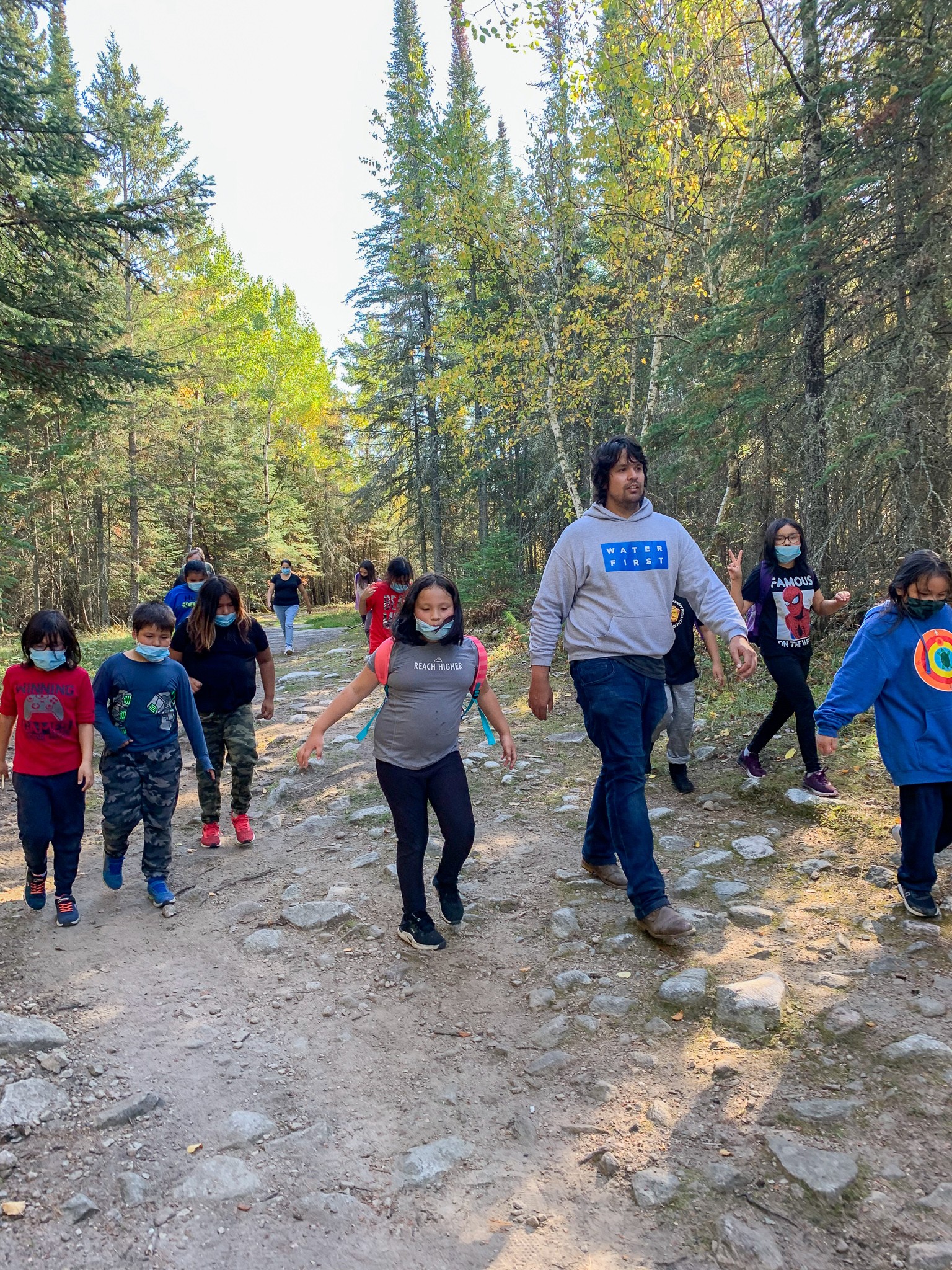

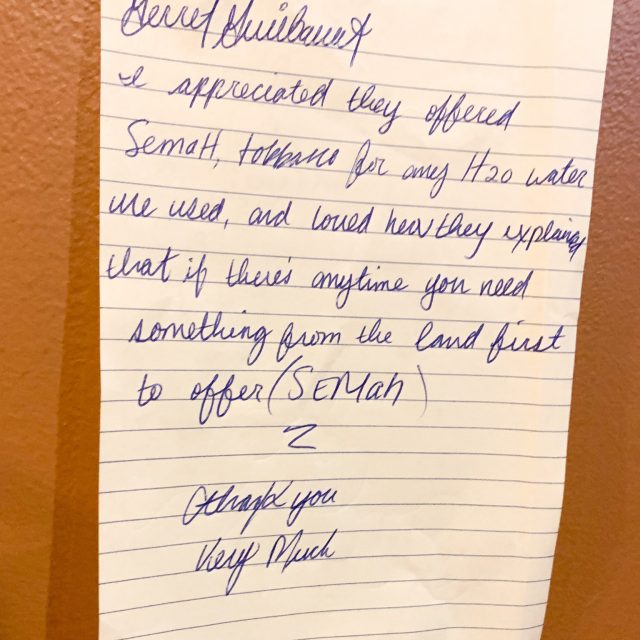
As guests in a local school, ISWP likes to make sure we are respecting the local culture and practices. Sometimes this means joining in a morning assembly or smudge. Other times, we integrate cultural teachings of our own.
While we were in Kiizhik, it became clear to us that the staff and students respect the land and understand, both spiritually and mentally, that everything is connected. With this observation, we decided to bring some Semah, or tobacco, for the students to make an offering or say a prayer before we started our study on the water. This is not a practice all of the schools or communities we work with follow.
At Kiizhik, the staff was grateful to see an outside organization bring a meaningful cultural teaching to the classroom. One of the staff even took time to write their appreciation on paper for us.
During our week in Kiizhik School, it was amazing to see the teachers and students engage with the content even beyond our time with each class. The grade 3-4 teacher, Shea Cannon, asked us to come to her classroom at the end of the week to see the students’ work. Each had drawn a watershed of their own: a reflection of the workshop we did with them outside. The level of comprehension made us truly proud of the students and the work we did throughout the week. Below are some of our favourites. We are so grateful to Shea for sharing.
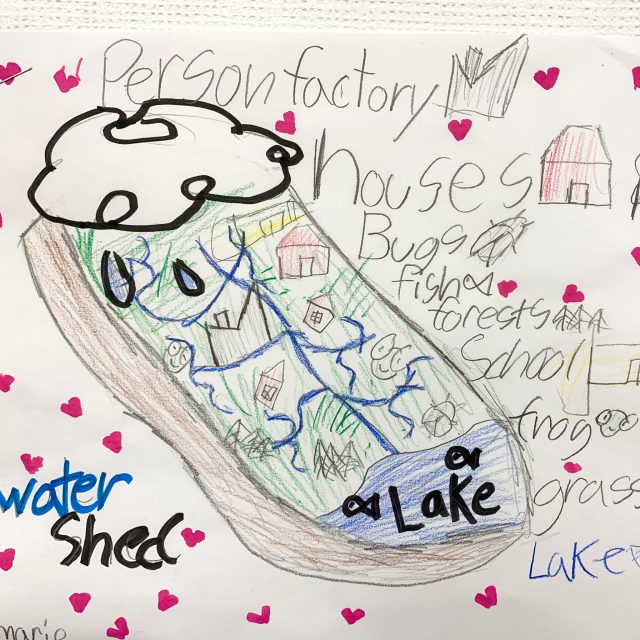
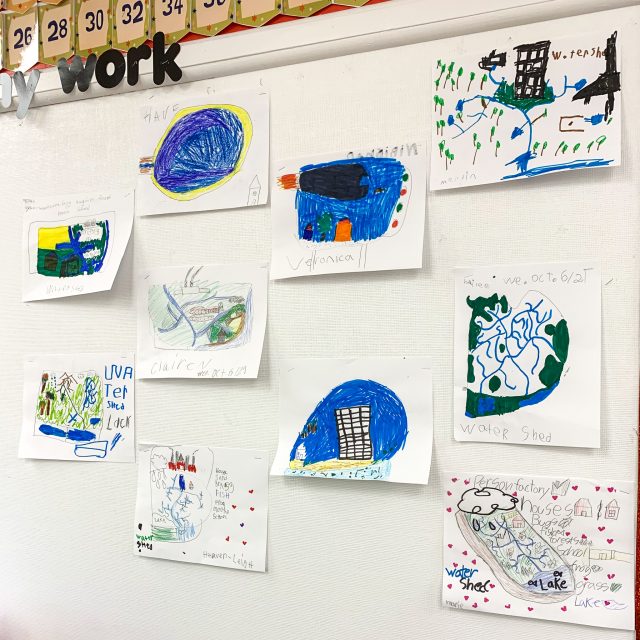
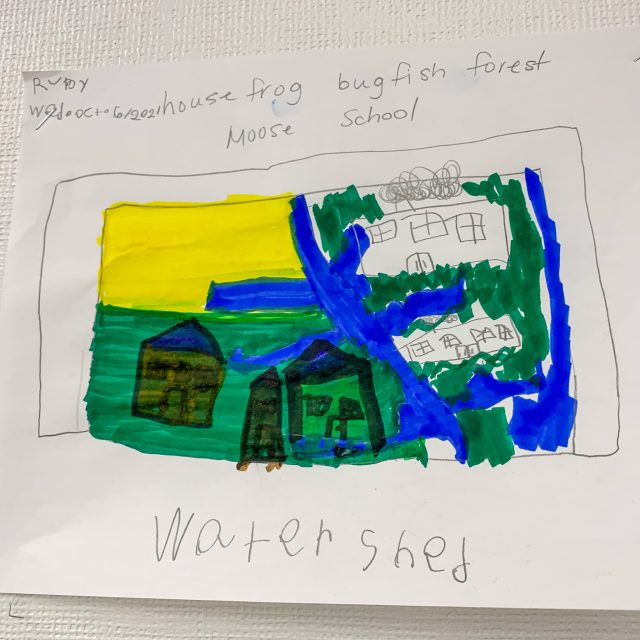
The entire staff at Kiizhik School was welcoming and genuinely interested in our programming. One of the high school teachers, Janae Grafham, provided lovely feedback saying, “This program was extremely valuable. All students were eager to learn and engaged in their learning. The students continued to talk about how exciting the activities were and how much they learned in the days following the activity. This hands-on opportunity was a highlight of our school year.” We are happy the students and staff liked having us because we feel the same way. We’re looking forward to our next opportunity to continue working with Kiizhik School, and all of the schools associated with the Bimose Water First Internship.
Learn more about Water First’s Indigenous Schools Water Program.
